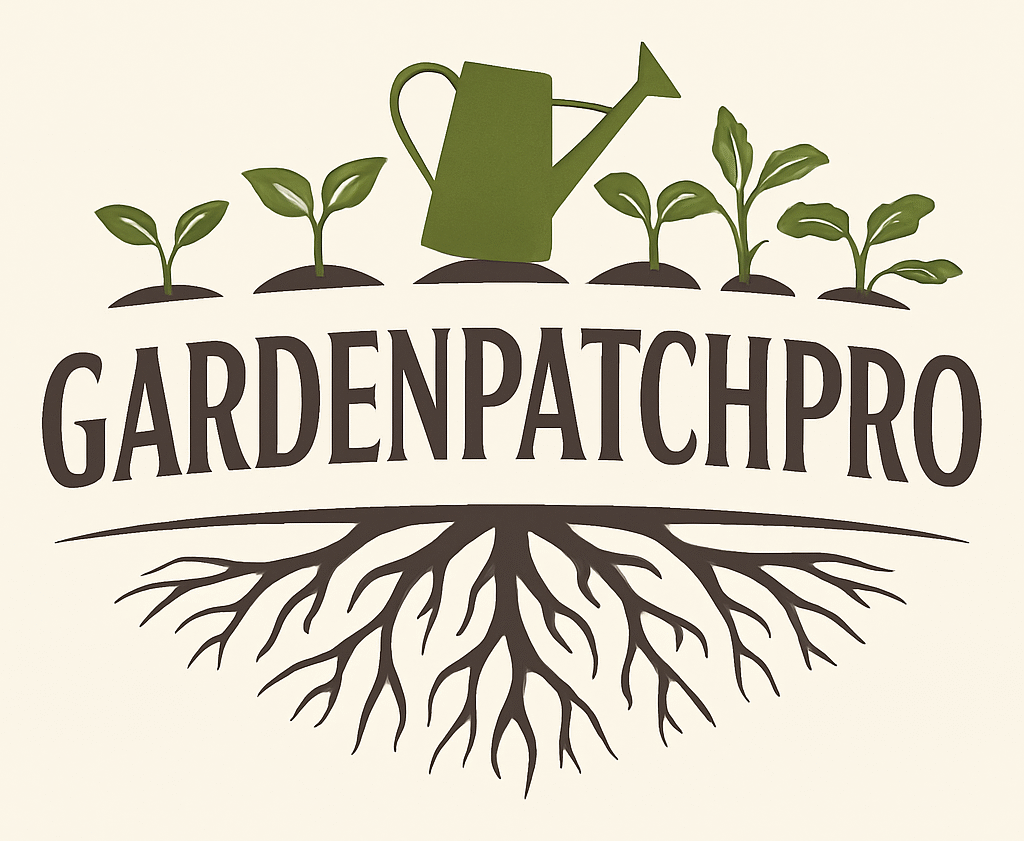7 Cottage Garden Ideas for Timeless Outdoor Charm and Easy Care
A cottage garden offers a charming and natural way to bring life and color to any outdoor space. It blends a mix of plants, flowers, and textures that create a relaxed yet beautiful setting. Many gardeners appreciate this style for its timeless appeal and inviting atmosphere.
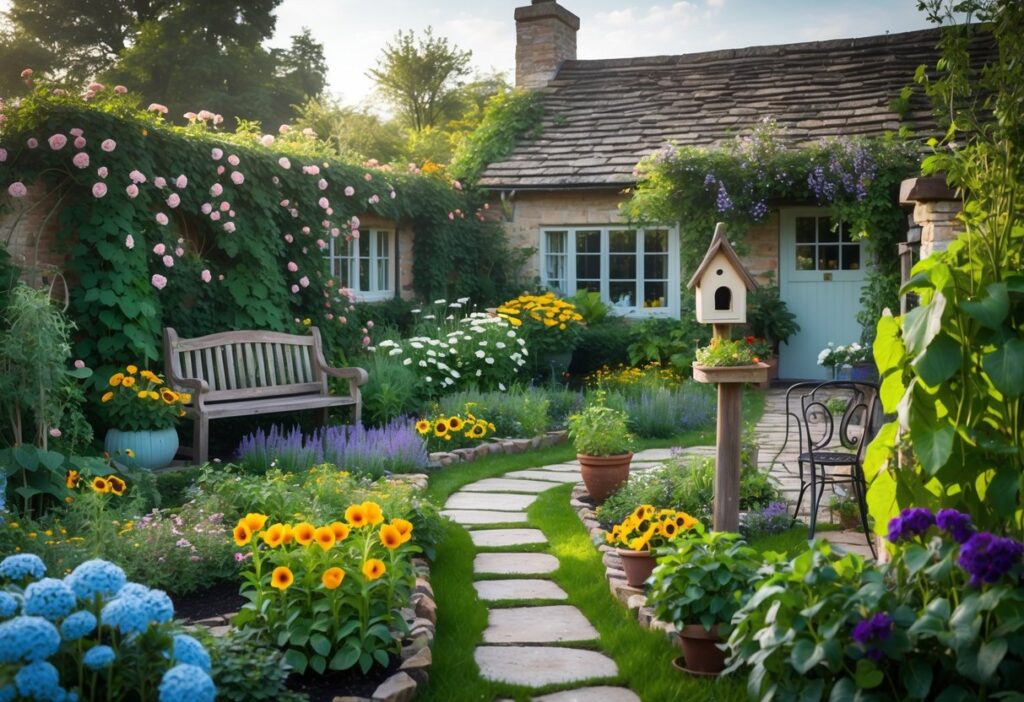
The key to a successful cottage garden is combining different plants and design ideas to make the space look both lively and effortless. This guide shares seven simple ideas to help anyone create or improve a cottage garden, no matter the size or experience level.
1) Plant self-seeding foxgloves for natural, effortless blooms
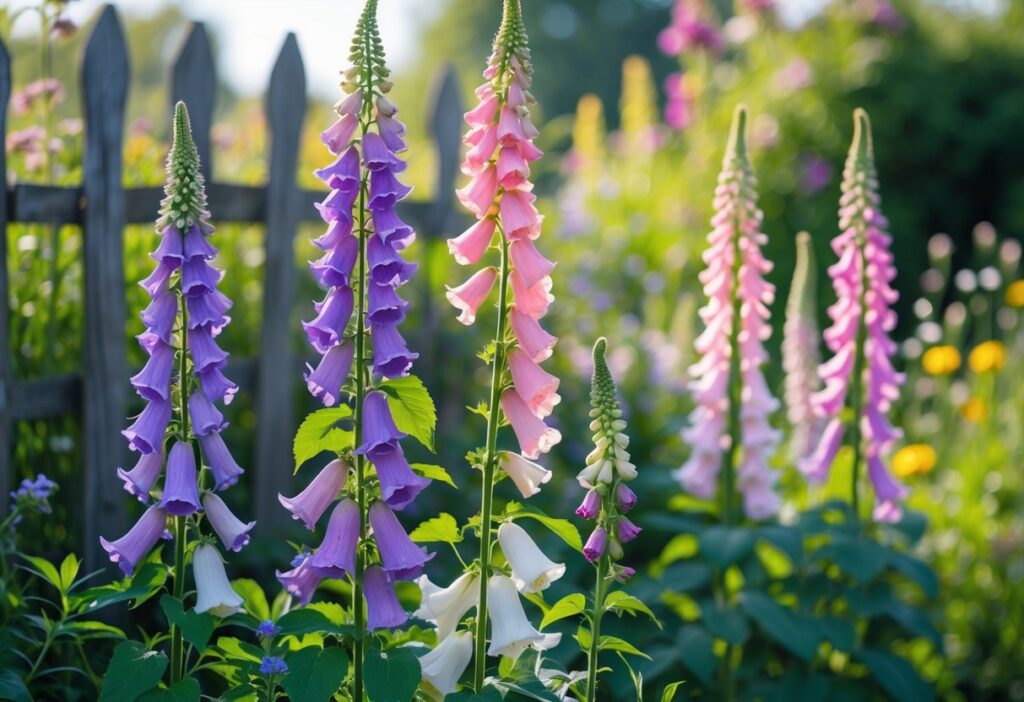
Foxgloves are a great choice for a cottage garden because they grow tall and produce colorful flowers. They usually live for two years, blooming in the second year before they start to self-seed. This means new plants will grow on their own with little effort.
These plants add height and interest with their spires of pink, purple, or white flowers. Foxgloves work well in garden borders and look good alongside round-shaped flowers like roses and peonies. They attract pollinators such as bees, helping the garden stay healthy.
Starting foxgloves from seed is easy and cost-effective. Many gardeners like to plant seeds in early spring or late summer. Once established, foxgloves often reseed freely, creating a natural, flowing look without constant replanting.
For best results, foxgloves prefer part shade and well-drained soil. They can grow up to five feet tall, becoming striking garden focal points. Growing foxgloves ensures reliable blooms year after year with minimal care and a classic cottage garden feel. See tips on growing foxgloves for cottage charm at biggergarden.com.
2) Incorporate romantic climbing clematis vines on trellises
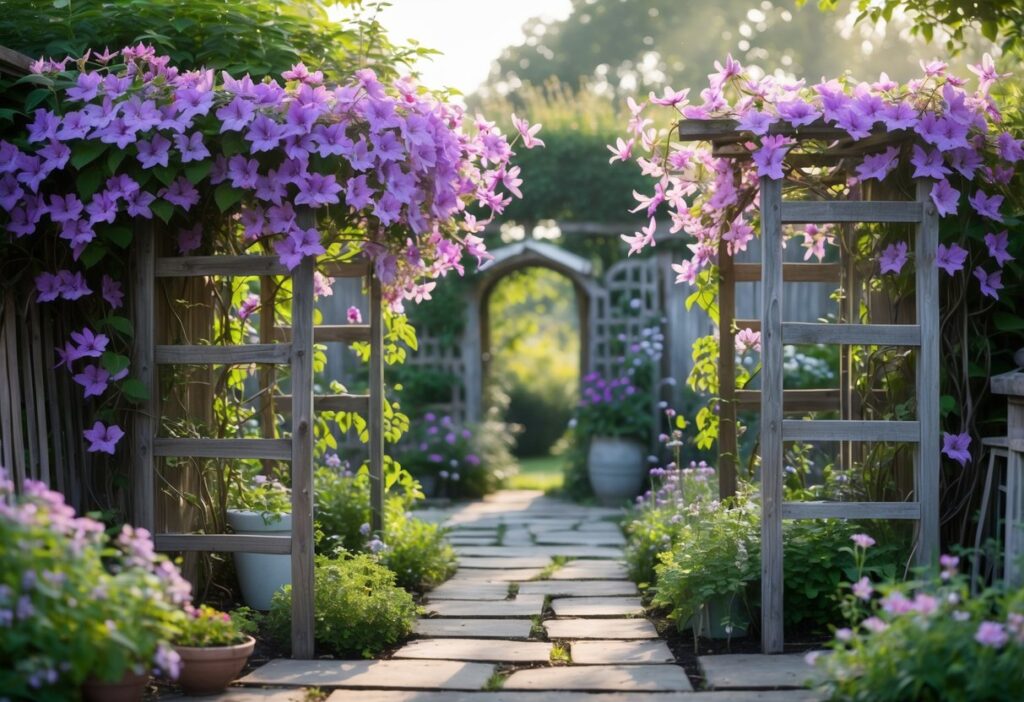
Climbing clematis vines add charm and height to a cottage garden. They produce colorful flowers that create a soft, romantic look. Using a trellis helps the vines grow upward, saving space and adding vertical interest.
Trellises can be made from wood, metal, or other sturdy materials. Arched or classic wooden trellises often work well with clematis, giving a natural feel to the garden. These structures support the vine and shape its growth.
Clematis blooms in many shades, which can brighten corners or frame garden paths. Placing trellises along fences or gates adds color and texture without crowding other plants. This makes the garden feel fuller and more inviting.
For a creative touch, gardeners can use unique trellis designs like gabion cages or built-in planters. These options combine function and style to suit different garden themes. Adding a clematis-covered trellis transforms outdoor spaces into peaceful retreats.
More ideas on clematis trellis designs are available at 21 stunning clematis trellis ideas that will transform your garden.
3) Create winding pathways with stone or gravel for whimsical flow
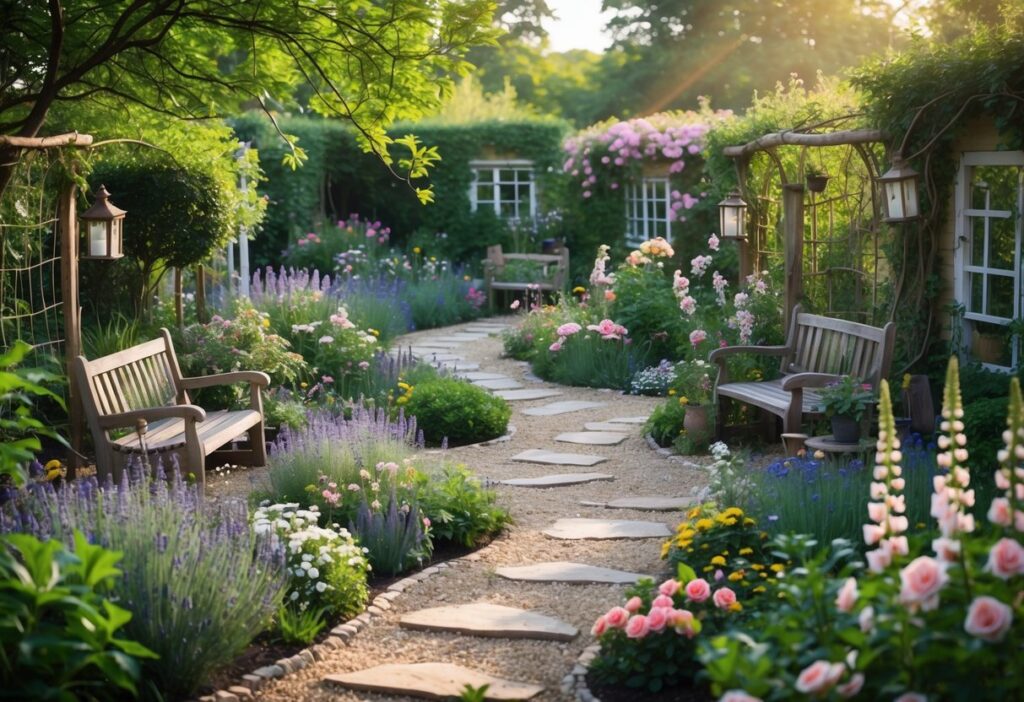
Winding pathways add a gentle, natural feel to a cottage garden. Using stone or gravel helps create a soft, charming look that fits well with other garden elements.
Stone paths, like flagstones, offer a sturdy surface while blending with the landscape. Placing stones irregularly can mimic natural patterns. Small plants growing between stones enhance the organic effect.
Gravel paths are easy to install and maintain. They can curve smoothly to guide visitors through different garden areas. Gravel also allows water to drain well, which helps keep the path dry.
Curving paths invite people to move slowly and enjoy each part of the garden. This winding design creates a calm, peaceful flow. Paths like these bring a sense of discovery and quiet charm to the outdoor space.
For more ideas on whimsical stone garden paths, see 14 Gorgeous Garden Pathway Ideas To Elevate Your Yard This Spring Season.
4) Use raised beds in linear layouts for structured planting zones

Raised beds arranged in straight lines create clear, organized planting areas. This makes it easier to plan and care for different types of plants. Each bed can hold a specific group of flowers, herbs, or vegetables.
Linear layouts also help with garden maintenance. Paths between beds allow easy access for watering, weeding, and harvesting. It keeps plants from getting crowded and promotes healthy growth.
This design works well in small or narrow spaces. It maximizes the use of available area without feeling cluttered. Raised beds in rows add neatness to the natural look of a cottage garden.
Using raised beds adds better soil control and drainage. Gardeners can fill them with quality soil suited to the plants. This reduces problems with poor soil and pests.
For more ideas, gardeners can explore raised bed layout options to fit their garden style.
5) Combine ferns with colorful perennials for lush texture contrast
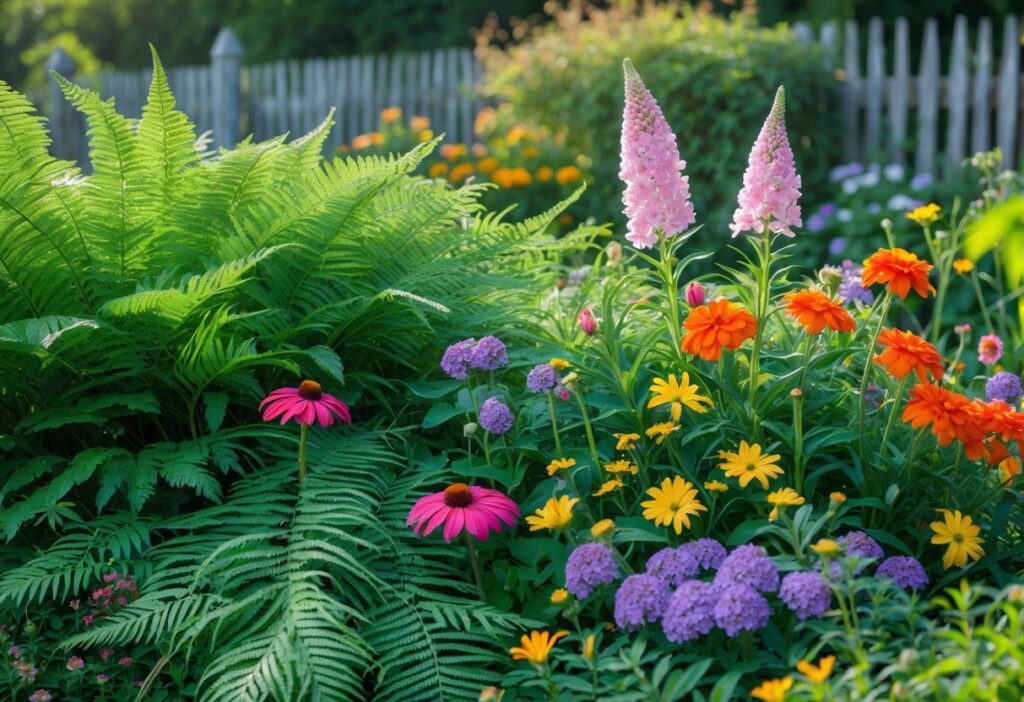
Ferns bring a soft, green texture that works well with bright and colorful perennials. Pairing them creates a garden that feels full and vibrant without being overwhelming. The airy leaves of ferns contrast nicely with bold flowers, adding depth to the garden.
Choosing perennials like astilbe, hosta, or columbine helps enhance the look. These plants prefer similar shady conditions and can bloom alongside ferns. The mix of colors and textures keeps the garden visually interesting all season.
Using ferns with perennials also supports a natural, woodland feel. Rocks or wood mulch placed around the plants can emphasize this effect. This approach creates a calm and inviting space that fits well in a cottage garden style.
For more ideas on combining ferns and companion plants, see this guide on What to Plant With Ferns. It includes variety suggestions that thrive together and maintain a lush green look.
6) Add cozy seating areas surrounded by vibrant flower clusters

Creating a seating spot in a cottage garden invites people to enjoy the outdoors comfortably. The key is placing chairs or benches where they feel part of the garden.
Surrounding the seating with bright flower clusters makes the space more inviting. Flowers can soften hard edges and add color and fragrance.
Choosing curved flower beds around seating areas helps guide the eye and creates a natural frame. This design makes the spot feel enclosed yet open to the garden.
Combining different flower types and heights adds texture and interest. Using a mix of perennials and annuals can keep the area colorful through the seasons.
This simple layout turns a garden corner into a peaceful retreat for reading, relaxing, or chatting. It also links the seating seamlessly into the overall garden design.
For ideas on arranging flower beds around cozy spots, see small cottage garden design tips for seating areas.
7) Include garden walls or fences with climbing roses for charm

Climbing roses add a classic touch to garden walls and fences. They bring height and color, creating a natural screen or focal point. Their blooms soften hard surfaces and add a romantic feel.
A weathered fence paired with climbing roses gives a timeless, cozy look. Roses like pale pink or deep violet climb well on trellises, stone walls, or wooden fences. They prefer well-drained soil and morning sun.
Training climbing roses on supports helps control their growth. Pruning after flowering keeps plants healthy and encourages more blooms. These roses also attract pollinators, which benefits the whole garden.
Using climbing roses on garden walls or fences fits well with traditional cottage garden styles. It blends beauty with function, offering privacy and adding character. For more ideas on combining climbing roses with garden features, see 9 creative ways to use climbing roses in your garden.
Cottage Garden Design Principles

Cottage gardens rely on thoughtful choices in color and structure to create charm and balance. The right mix of colors and the blend of neat and wild elements shape a garden that feels both inviting and natural.
Color Harmony in Planting
Color in a cottage garden should feel effortless but planned. Using soft pastels like pale pinks, blues, and whites creates a calm base. Adding bursts of brighter colors like yellows or purples brings energy without overwhelming the space.
Plants are often grouped by similar tones to avoid chaos. For example, pairing lavender with white daisies keeps colors consistent. Mixing complementary colors, such as blue and orange, adds interest but should be done sparingly.
A focused palette helps the garden look unified. Repeating colors across different flower types also ties the garden together. This approach ensures every section feels part of a cohesive design rather than a random planting.
Balancing Formal and Informal Elements
Cottage gardens blend wild growth with structured shapes. Formal elements include pathways, borders, or garden benches. These create clear lines and order in the overall layout.
Informal elements like freely growing roses, clematis vines, and self-seeding flowers soften the structure. This untamed look adds depth and natural beauty to the garden.
To balance these, formal parts act as a frame while informal plantings fill in spaces. For example, a neatly edged path can lead through wild clusters of foxgloves and ferns.
This blend allows the garden to feel relaxed yet cared for. It gives visitors a sense of gentle whimsy framed by thoughtful design. More advice on this natural, romantic style is available in Cottage Landscaping Ideas for a Natural, Romantic Garden Style.
Essential Cottage Garden Maintenance
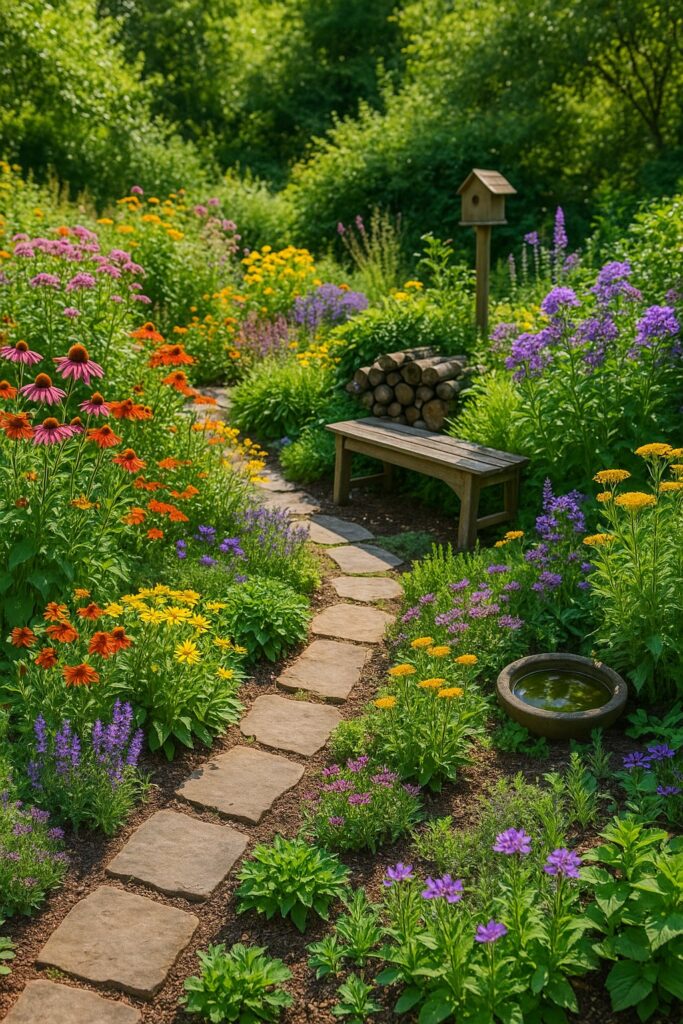
Maintaining a cottage garden involves regular care throughout the year to keep plants healthy and the garden looking its best. It also means creating a space where different plants and wildlife can thrive together naturally.
Seasonal Care Tips
Each season requires specific tasks to support plant health and garden structure. In spring, gardeners should prune dead branches and remove winter debris to encourage new growth. Early planting of perennials and bulbs helps establish strong roots.
Summer care focuses on watering deeply but less often to promote healthy roots. Mulching helps retain moisture and control weeds. Deadheading spent flowers encourages continuous blooming.
In autumn, cutting back perennials and clearing fallen leaves prepares the garden for winter. Adding compost improves soil fertility. Winter tasks include protecting sensitive plants from frost with covers or mulch.
Encouraging Biodiversity
A healthy cottage garden includes a mix of native plants, perennials, and shrubs that attract beneficial insects, birds, and pollinators. Planting a variety of flowers with staggered bloom times ensures food sources year-round.
Creating wildlife-friendly features, such as log piles, birdhouses, and small water sources, supports natural pest control. Avoiding chemical pesticides encourages beneficial insects like ladybugs and bees.
Using companion planting, like mixing herbs and flowers, helps repel harmful pests and promotes plant health. This balance reduces the need for heavy maintenance and supports a thriving ecosystem.
Learn more about these practical ideas for keeping a garden low-maintenance and beautiful from low-maintenance cottage garden ideas.
